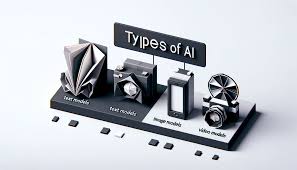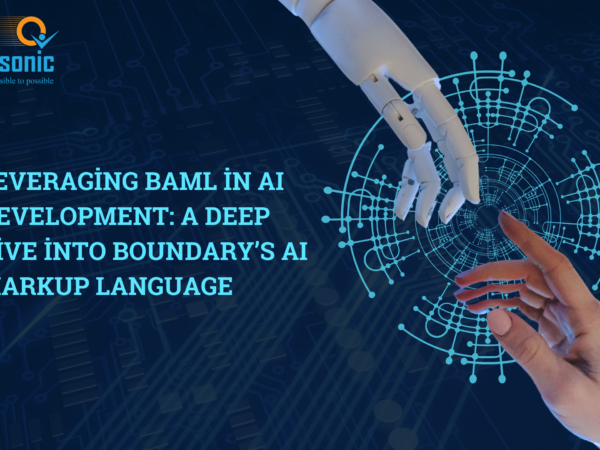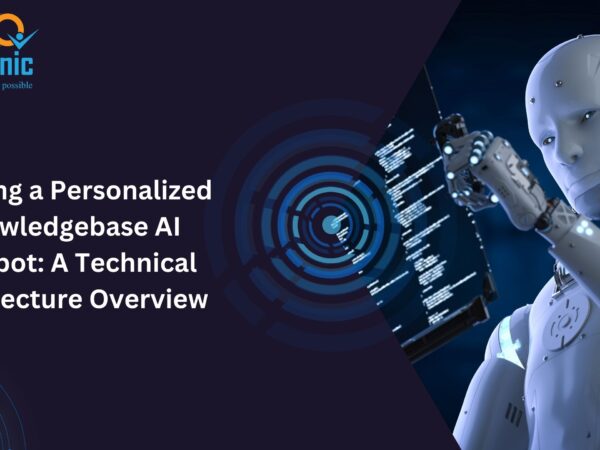Artificial Intelligence (AI) has transformed countless industries, bringing innovations that were once considered the realm of science fiction into everyday reality. At the heart of these innovations are AI models—the algorithms and frameworks that enable machines to mimic human intelligence. Understanding the different types of AI models is crucial for leveraging their potential in diverse applications. In this article, we will explore the various types of AI models, their characteristics, and their use cases, providing a comprehensive guide to this fascinating subject.
Categories of AI Models
AI models can be broadly categorized based on their learning paradigms, architectures, and specific applications. The main categories include:
- Supervised Learning Models
- Unsupervised Learning Models
- Reinforcement Learning Models
- Generative Models
- Rule-Based Models
- Neural Network-Based Models
- Hybrid AI Models
1. Supervised Learning Models
Supervised learning models are designed to learn from labeled datasets, where the input data is paired with the correct output. These models aim to map inputs to outputs by minimizing the error between the predicted and actual outcomes.
Characteristics:
- Requires labeled datasets
- Focuses on prediction and classification
- Relies on a clear relationship between inputs and outputs
Common Algorithms:
- Linear Regression: Predicts continuous outcomes by modeling the relationship between independent and dependent variables.
- Logistic Regression: Used for binary classification problems, such as spam detection.
- Decision Trees: Creates a tree-like model for decision-making and classification.
- Support Vector Machines (SVM): Finds the optimal boundary between classes.
- Neural Networks: Mimics the human brain to solve complex tasks.
Applications:
- Fraud detection
- Email spam classification
- Predictive maintenance
- Medical diagnosis
2. Unsupervised Learning Models
Unsupervised learning models work with unlabeled datasets, aiming to uncover hidden patterns, relationships, or structures within the data. These models are often used for exploratory data analysis.
Characteristics:
- No labeled outputs required
- Focuses on discovering data patterns
- Suitable for clustering and dimensionality reduction
Common Algorithms:
- K-Means Clustering: Groups data points into clusters based on similarity.
- Hierarchical Clustering: Builds a hierarchy of clusters.
- Principal Component Analysis (PCA): Reduces dimensionality while preserving variance.
- Autoencoders: Neural networks used for unsupervised tasks like anomaly detection.
Applications:
- Customer segmentation
- Recommendation systems
- Market basket analysis
- Gene expression analysis
3. Reinforcement Learning Models
Reinforcement learning models learn by interacting with an environment and receiving feedback in the form of rewards or penalties. These models aim to maximize cumulative rewards over time.
Characteristics:
- Learns through trial and error
- Focuses on sequential decision-making
- Involves agents, actions, states, and rewards
Common Algorithms:
- Q-Learning: Learns the value of actions in a given state.
- Deep Q-Networks (DQN): Combines Q-Learning with deep neural networks.
- Policy Gradient Methods: Directly optimizes the policy that an agent follows.
- Actor-Critic Models: Combines value-based and policy-based methods.
Applications:
- Robotics
- Game AI (e.g., AlphaGo)
- Autonomous vehicles
- Financial portfolio management
4. Generative Models
Generative models are designed to generate new data samples that resemble a given dataset. These models have gained popularity for their ability to create realistic images, audio, and text.
Characteristics:
- Focuses on data generation
- Learns the underlying data distribution
- Requires a large amount of training data
Common Algorithms:
- Generative Adversarial Networks (GANs): Composed of a generator and a discriminator working in tandem.
- Variational Autoencoders (VAEs): Encodes input data into a latent space for reconstruction.
- Diffusion Models: Generates high-quality images by iteratively refining noise.
Applications:
- Image synthesis
- Text generation (e.g., GPT models)
- Drug discovery
- Style transfer in images
5. Rule-Based Models
Rule-based AI models operate based on predefined rules and logic programmed by humans. These models are simple and interpretable but lack the adaptability of learning-based models.
Characteristics:
- Relies on explicit rules
- Easy to interpret and debug
- Limited by the quality of the rules
Examples:
- Expert Systems: Mimic human expertise in specific domains.
- Decision Trees: Can be used in a rule-based manner.
Applications:
- Chatbots with predefined responses
- Business process automation
- Medical diagnosis (using rules derived from clinical guidelines)
6. Neural Network-Based Models
Neural networks are a subset of machine learning models inspired by the structure of the human brain. These models excel at handling complex and unstructured data such as images, audio, and text.
Characteristics:
- Composed of layers of interconnected nodes (neurons)
- Requires substantial computational resources
- Capable of deep learning (multi-layered architectures)
Types of Neural Networks:
- Convolutional Neural Networks (CNNs): Specialize in image processing and recognition.
- Recurrent Neural Networks (RNNs): Handle sequential data like time series and text.
- Transformers: State-of-the-art models for NLP and large-scale data.
- Multilayer Perceptrons (MLPs): Basic feedforward neural networks.
Applications:
- Facial recognition
- Natural language processing (e.g., translation, sentiment analysis)
- Voice assistants
- Autonomous driving
7. Hybrid AI Models
Hybrid models combine two or more types of AI techniques to leverage their strengths and compensate for their weaknesses. These models are becoming increasingly popular in real-world applications.
Characteristics:
- Integrates multiple AI paradigms
- Provides flexibility and robustness
- Solves complex problems more effectively
Examples:
- Combining supervised and unsupervised learning for semi-supervised tasks
- Using reinforcement learning with neural networks (e.g., DeepMind’s AlphaGo)
- Integrating rule-based systems with machine learning for explainability
Applications:
- Fraud detection systems
- Healthcare diagnostics
- Advanced robotics
Choosing the Right AI Model
The choice of an AI model depends on several factors, including:
- Nature of the Data: Is the data labeled, unlabeled, or sequential?
- Complexity of the Problem: Does the problem require deep learning or simpler algorithms?
- Computational Resources: Some models, like deep neural networks, require significant hardware capabilities.
- Scalability and Interpretability: Is explainability important, or is performance the primary goal?
Emerging Trends in AI Models
AI is an ever-evolving field, and new types of models are continually emerging. Key trends include:
- Federated Learning: Enables AI models to learn across decentralized data sources without compromising privacy.
- Edge AI: Models designed to run on edge devices like smartphones and IoT devices.
- Explainable AI (XAI): Focuses on making AI models more interpretable and transparent.
- Few-Shot and Zero-Shot Learning: Models that learn with minimal labeled data.
- Large Language Models (LLMs): E.g., GPT-4, capable of understanding and generating human-like text.
Conclusion
AI models are at the core of modern technological advancements, enabling machines to perform tasks ranging from basic predictions to highly complex problem-solving. Understanding the different types of AI models—from supervised and unsupervised learning to reinforcement and generative models—is essential for leveraging their potential in practical applications. As AI continues to evolve, the emergence of hybrid and specialized models will further expand its capabilities, paving the way for even more groundbreaking innovations.








